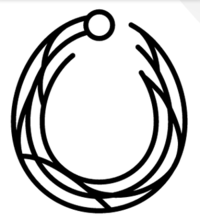Celtic Media Festival
 | |
| Location | Celtic nations |
|---|---|
| Founded | 1980 |
| Awards | Torc Awards |
| Directed by | Pádhraic Ó Ciardha |
| Produced by | Catriona Logan |
| Language | Irish, Scottish Gaelic, Welsh, Breton, Manx and Cornish |
| Website | www.celticmediafestival.co.uk |
The Celtic Media Festival, formerly known as the Celtic Film and Television Festival, aims to promote the languages and cultures of the Celtic nations in film, on television, radio and new media. The festival is an annual three-day celebration of broadcasting and film from Scotland, Ireland, Wales, Isle of Man, Cornwall and Brittany. The festival has existed for nearly forty years.
Contents
1 History
2 Chairs
3 Festival Locations
4 Categories
5 See also
6 References
7 External links
History
The festival was first held in 1980, on the Scottish islands of South Uist and Benbecula. The 30th festival was held in March 2009 in Caernarfon, Wales. The festival presents the Torc Awards to the winners of 22 different categories.
The festival also presents a Gold Torc to the winner of Spirit of the Festival Award - a film or television programme wholly or substantially in a Celtic language that encapsulates the spirit of the Celtic Media Festival.
Chairs
The Celtic Media Festival has been chaired by dedicated and respected individuals working in the broadcasting industry:
Irish Chairs:
- Pádhraic Ó Ciardha, TG4 – Present Chair
- Neasa Ní Chinnéide, RTÉ
- Bob Collins, RTÉ
- Con Bushe, RTÉ
- Muiris MacConghail, RTÉ
Cathal Goan, RTÉ
Scottish Chairs:
- Donald Waters, Grampian Television
- Neil Fraser, BBC Scotland
- Maggie Cunningham, BBC Scotland
- Domhnall Caimbeul, MG ALBA
Welsh Chairs:
- Huw Jones, S4C
John Hefin, Wales Film Council
Owen Edwards, S4C
Festival Locations
- 2019 - Aviemore, Scotland
- 2018 - Llanelli, Wales
- 2017 - Douglas, Isle of Man
- 2016 - Dungarvan, Ireland[1]
- 2015 - Inverness, Scotland[2]
- 2014 - St Ives, Cornwall
- 2013 - Swansea, Wales
- 2012 - Derry, Northern Ireland
- 2011 - Stornoway, Scotland
- 2010 - Newry, Northern Ireland
- 2009 - Caernarfon, Wales
- 2008 - Galway, Ireland
- 2007 - Skye, Scotland
- 2006 - Falmouth, Cornwall
- 2005 - Cardiff, Wales
- 2004 - Dundee, Scotland
- 2003 - Belfast, Northern Ireland
- 2002 - Quimper, Brittany
- 2001 - Truro, Cornwall
- 2000 - Aberystwyth, Wales
- 1999 - Skye, Scotland
- 1998 - Tralee, Ireland
- 1997 - St Ives, Cornwall
- 1996 - Bangor, Wales
- 1995 - Fort William, Scotland
- 1994 - Derry, Northern Ireland
- 1993 - Lorient, Brittany
- 1992 - Carmarthen, Wales
- 1991 - Inverness, Scotland
- 1990 - Gweedore, Ireland
- 1989 - Roscoff, Brittany
- 1988 - Caernarfon, Gwynedd, Wales
- 1987 - Inverness, Scotland
- 1986 - Newcastle, County Down, Northern Ireland
- 1985 - Douarnenez and Rennes, Brittany
- 1984 - Cardiff, Wales
- 1983 - Glasgow, Scotland
- 1982 - Wexford, Ireland
- 1981 - Harlech, Wales
- 1980 - Benbecula, Scotland
Categories
Documentary / Factual : Factual Series - Factual Entertainment - Single Documentary - History - Sport - Arts - Current Affairs
Drama : Short Drama - Single Drama - Drama Series
Further Screen Categories : Comedy - Animation - Children - Entertainment - Short Form
Radio : Radio Station of the Year - Radio Documentary - Radio Music Programme - Radio Sports - Radio Presenter/Personality - Radio Comedy - Radio Magazine Show
See also
- List of Celtic-language media
- List of television festivals
References
^ Slattery, Laura (22 April 2016). "Ten TV trends at the Celtic Media Festival". The Irish Times. Retrieved 27 November 2016..mw-parser-output cite.citationfont-style:inherit.mw-parser-output .citation qquotes:"""""""'""'".mw-parser-output .citation .cs1-lock-free abackground:url("//upload.wikimedia.org/wikipedia/commons/thumb/6/65/Lock-green.svg/9px-Lock-green.svg.png")no-repeat;background-position:right .1em center.mw-parser-output .citation .cs1-lock-limited a,.mw-parser-output .citation .cs1-lock-registration abackground:url("//upload.wikimedia.org/wikipedia/commons/thumb/d/d6/Lock-gray-alt-2.svg/9px-Lock-gray-alt-2.svg.png")no-repeat;background-position:right .1em center.mw-parser-output .citation .cs1-lock-subscription abackground:url("//upload.wikimedia.org/wikipedia/commons/thumb/a/aa/Lock-red-alt-2.svg/9px-Lock-red-alt-2.svg.png")no-repeat;background-position:right .1em center.mw-parser-output .cs1-subscription,.mw-parser-output .cs1-registrationcolor:#555.mw-parser-output .cs1-subscription span,.mw-parser-output .cs1-registration spanborder-bottom:1px dotted;cursor:help.mw-parser-output .cs1-ws-icon abackground:url("//upload.wikimedia.org/wikipedia/commons/thumb/4/4c/Wikisource-logo.svg/12px-Wikisource-logo.svg.png")no-repeat;background-position:right .1em center.mw-parser-output code.cs1-codecolor:inherit;background:inherit;border:inherit;padding:inherit.mw-parser-output .cs1-hidden-errordisplay:none;font-size:100%.mw-parser-output .cs1-visible-errorfont-size:100%.mw-parser-output .cs1-maintdisplay:none;color:#33aa33;margin-left:0.3em.mw-parser-output .cs1-subscription,.mw-parser-output .cs1-registration,.mw-parser-output .cs1-formatfont-size:95%.mw-parser-output .cs1-kern-left,.mw-parser-output .cs1-kern-wl-leftpadding-left:0.2em.mw-parser-output .cs1-kern-right,.mw-parser-output .cs1-kern-wl-rightpadding-right:0.2em
^ Spowart, Nan (16 April 2015). "Referendum coverage under spotlight at Celtic Media Festival". The National. Retrieved 27 November 2016.
External links
- Celtic Media Festival web site
This article about a film festival is a stub. You can help Wikipedia by expanding it. |

